Be Prepared: 10 Common Medical Emergencies & How to Deal With Them
First aid is extremely helpful to make a casualty feel comfortable before professional medical help arrives.
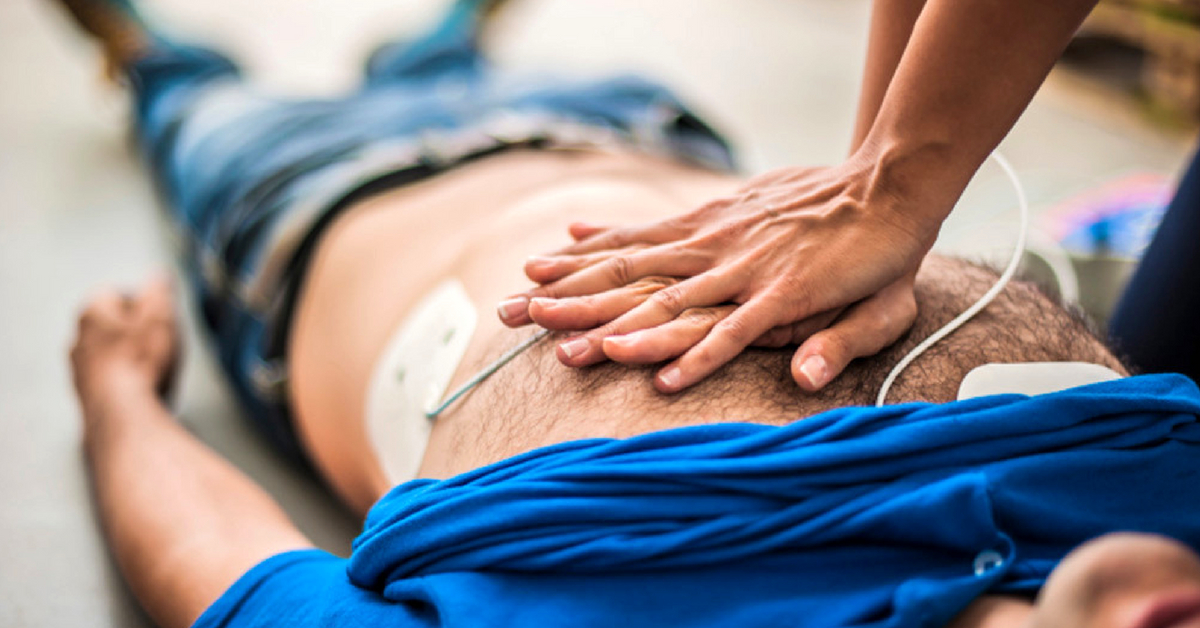
While our immediate response to an injury might be panic, keeping calm has never been more helpful, whereby we can give first aid.
The following is a list of aids in common household injuries. If the situation is grave, do remember to call for medical aid afterwards.
1. Burns and Scalds:-

Burns can be caused through dry heat such as fire or hot metal or contact with an object charged with a high tension electric current, or friction with a revolving wheel or fast-moving rope. Additionally, chemical burns occur with corrosive chemicals like acids and alkalis.
A scald is an injury caused by moist heat, like boiling water, steam, hot oil or tar.
The effects of a burn or a scald are the same. There may be reddening of the skin or blister formation or destruction of the skin, or of the deeper tissues.
The areas of most burns and scalds, including the clothing are sterile for a short period, and efforts should be made to keep them so until medical aid is possible.
General rules for treatment:-
1. Avoid handling the affected area more than necessary. See that your hands are as clean as possible by washing them.
2. Do not apply lotions of any kind.
3. Do not remove burned clothing and do not break blisters.
4. Cover the area (including burned clothing), with a dry sterile dressing if possible, or similar material such as clean lint, freshly-laundered linen.
5. Bandage firmly, except when blisters are present or suspected, in which case, bandage lightly.
6. Immobilise the area by suitable means.
7. Treat for shock.
In case of a major burn, move the patient to the hospital as quickly as possible. The patient will probably require an anaesthetic, so don’t give any oral medicines.
If the burns are caused by a corrosive chemical:-
For acids:-
1. Thoroughly flood the part with water.
2. Bathe the part freely with an alkaline solution made from two teaspoons of baking soda or washing soda in one pint of warm water.
For alkalis:-
1. If the burn is caused by quicklime, brush off any remains.
2. Bathe the part freely with a weak acid solution, such as vinegar or lemon juice, diluted with an equal quantity of warm water.
2. Heart Attack/Chest Pain:-
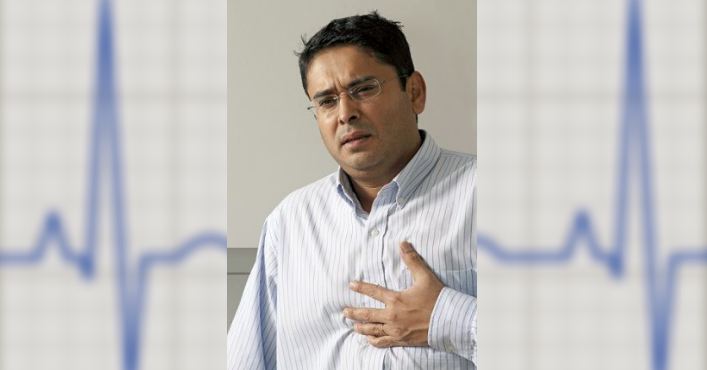
A heart attack occurs when there is a loss of blood supply to the heart. This happens when an artery supplying blood to the heart muscles is blocked by a blood clot.
Symptoms:-
1. Pain and discomfort in the chest area.
2. Shortness of breath, stomach discomfort, fainting, sweating, pain in the neck, jaws or shoulders.
Symptoms of heart attacks are different for men and women:-
Men have cold sweats, and pain may be felt descending through the left arm.
Women are more likely to have shortness of breath, stomach upset, dizziness and tiredness.
Treatment within the first 90 minutes of a heart attack dramatically increases the chances of survival. Before the person reaches a hospital, an aspirin tablet can lower the risk of clot formation.
Seat the patient in a comfortable position. If breathing isn’t normal or the patient is unresponsive, hands-on CPR (Cardiopulmonary resuscitation) may be applied, to double the chances of survival.
Read more here.
3. Major Cuts:-
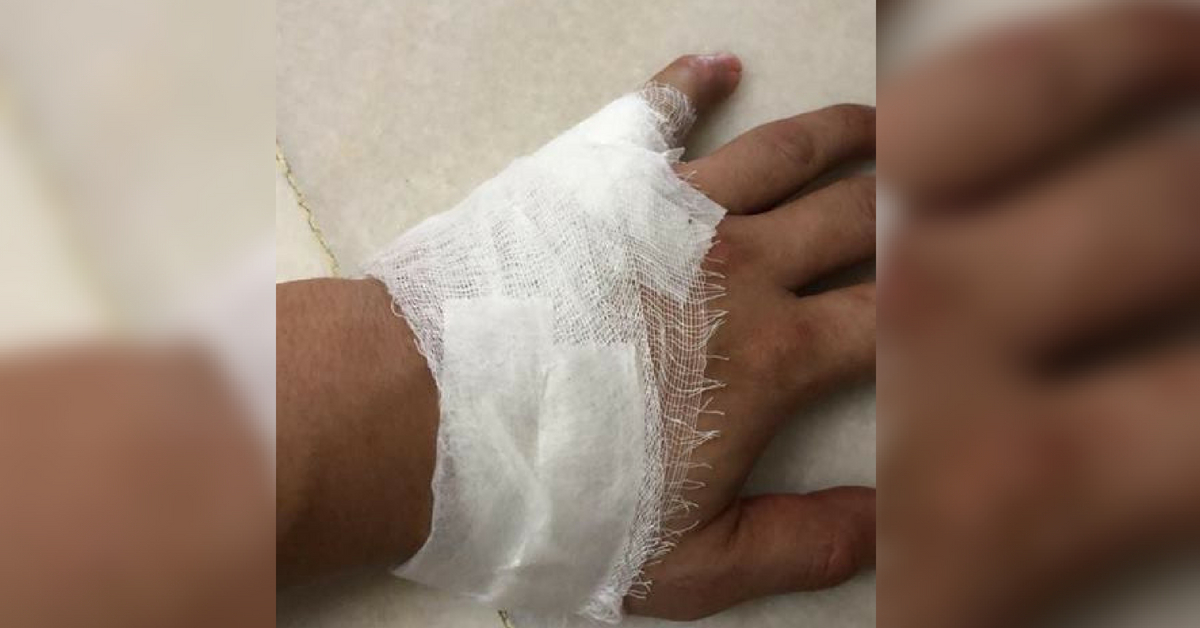
Major cuts, or wounds can be classified as follows:-
· Incised wounds, caused by a sharp instrument like a razor.
· Lacerated wounds, which have torn and irregular edges, caused by machinery, animal claws, etc.
· Contused wounds, accompanied by bruising of the tissues, caused by a direct blow or by crushing.
· Puncture wounds, which have comparatively small openings, but may be very deep, caused by a stab from any sharp-pointed instrument, like a needle, knife or bayonet.
In case of wounds, follow the steps below:-
1. Place patient in a suitable position, elevating the bleeding part, unless it is a fractured limb.
2. Do not disturb any blood clots formed.
3. Removing as little clothing as possible, expose the wound.
4. Remove any foreign bodies which are visible, and can be easily picked out or wiped off with a clean dressing.
6. Apply and maintain both direct and indirect pressure.
7. Apply a clean dressing and bandage.
8. Immobilise the injured part. When the wound is near a joint, immobilise it using splints if needed.
Remember, that if there is a foreign body in the wound which cannot be removed easily, cover it with a dressing, and build up sufficient pads around the wound without applying pressure to the foreign body.
If there is no foreign body in the wound, but the cut is deep, ensure that you use enough padding into the wound’s depths, and ensure pads project well above the level of the skin to ensure adequate pressure on the torn ends of the blood vessels.
4. Heat Stroke:-

In case of heat stroke, immediately move the patient out of the heat, remove excessive clothing, and cool them using whatever means possible, including
1. Placing the person in a tub of cool water or a cool shower
2. Spray with a garden hose
3. Sponge with cold water
4. Fan while misting with cool water
5. Place ice packs or cool, wet towels on the neck, armpits and groin
6. Cover with cool, damp sheets
Make the person drink cool water to rehydrate.
Read this for more information.
5. Fractures:-
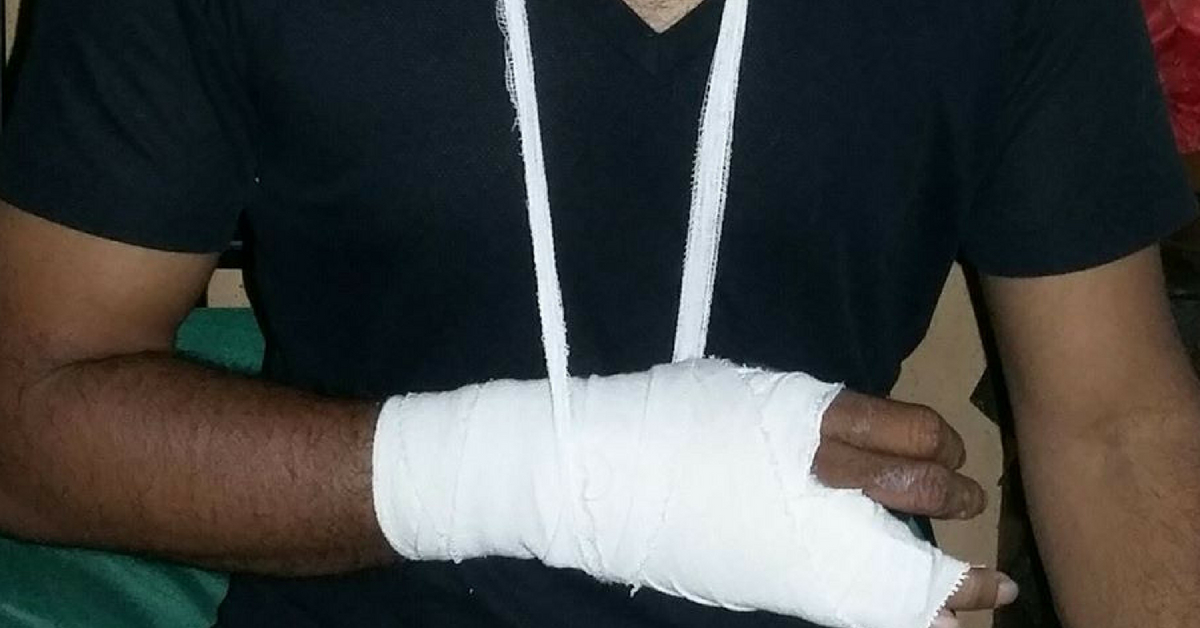
A simple fracture is when there is no wound leading down to the broken bone.
General symptoms and signs of a fracture:-
1. Pain at or near the seat of fracture
2. Tenderness or discomfort on general pressure over the fractured area
3. Swelling about the seat of fracture. This swelling frequently renders it difficult to perceive other signs of fracture and care must be taken not to underestimate the seriousness of the condition.
4. Deformity of the limb
5. The irregularity of the bone
General rules for treatment of fractures.
1. Treat the fracture on the spot
Don’t move the patient till the injured part has been immobilised unless life is in immediate danger from some other cause. If, however, circumstances are such that final immobilisation cannot be completed on the spot, carry out a temporary fix to enable the patient to be moved for a short distance to more suitable and safe surroundings. Haemorrhage and severe wounds must be dealt with before continuing with the treatment of fractures, with due regard to requirements of both types of injuries.
2. Steady and support the injured parts at once, so that movement is impossible. This prevents further injury and the increase in the bleeding which always takes place at the site of the fracture. It also prevents broken bone ends from piercing or damaging the skin, blood vessels, nerves or muscles.
3. Immobilise the fracture by the use of bandages or the use of splints.
Using the patient’s body as a means of support, application of bandages would be adequate. Additional support of splints may be required when there is a possibility of long or difficult transport before medical aid is possible. Splints are required when both lower limbs are fractured.
The use of bandages:-
Never apply a bandage over the site of a fracture. They must be applied sufficiently firmly to prevent harmful movements, but not so tightly as to prevent the circulation of blood.
In the case of a fractured limb, further swelling may occur, causing the bandage to become too tight. Should this occur, loosen them at once to allow normal circulation to return. Padding must always be placed between the ankles and knees if these are tied together.
Fractures of the upper limbs:-
These may occur
1. Close to the shoulder
2. Near the middle of the shaft
3. Close to or involving the elbow joint.
Fracture of the forearm:-
Shortening is unlikely to be observed unless both bones are broken.
Fracture of the lower end of the radius:-
This “Colles Fracture” is extremely common and frequently occurs due to a fall on an outstretched hand. It may be mistaken for a sprain of the wrist, and on the other hand, there may be a considerable deformity.
Fracture of the hands and fingers:-
Fracture of the bones of the hand may be accompanied by severe bleeding into the palm.
Treatment of all fractures of the upper limb:-
· Do not remove the patient’s jacket, if any.
· Bend the elbow and lay the injured limb against their chest with the fingers just touching the opposite shoulder.
· Apply adequate padding between the limb and the chest.
· Fix the hand in position with a collar and cuff sling, taking care that there is no constriction at the wrist.
· Secure the limb firmly to the chest by two broad bandages.
1. The first with its upper border level with the top of the shoulder.
2. The second with its lower border level with the tip of the elbow.
Tie off both bandages on the opposite side of the body, like in the picture.
· Feel the pulse on the injured side to ensure there is no interference with the circulation of the limb.
6. Electrocution:-
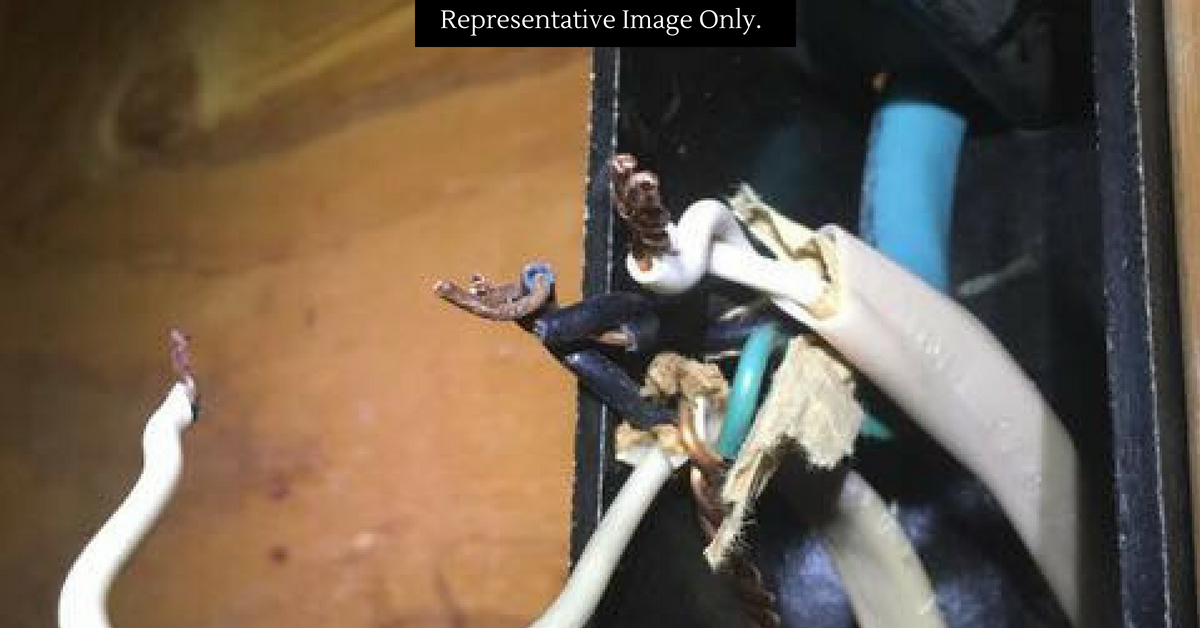
Caused by touching a live and naked wire, cable or rail, a shock may be relatively mild, or extremely severe. Burning is a result, and the burns may be severe or deep, especially with higher voltages.
In case of a shock, prompt action can aid the patient’s life. Perform the following steps.
1. Switch off the current, and if it cannot be put off, cut off supply by removing the plug, breaking the cable or wrenching it free. Never attempt to cut a cable with a knife or scissors.
2. Remove the patient from contact with the current with the greatest care, using dry insulating materials. With domestic apparatus, gloves are good; a folded garment or newspaper gives fair protection.
3. Reassure the patient.
4. Lay the patient down on their back, with the head low and turned to one side unless there is an injury to the head, abdomen or chest when the head and shoulders should be slightly raised and supported.
5. Loosen clothing around the neck, chest and waist.
6. Wrap them in a blanket or rug.
7. Give sips of water, coffee or any liquid but never alcohol.
Read more here.
7. Bites/Stings.
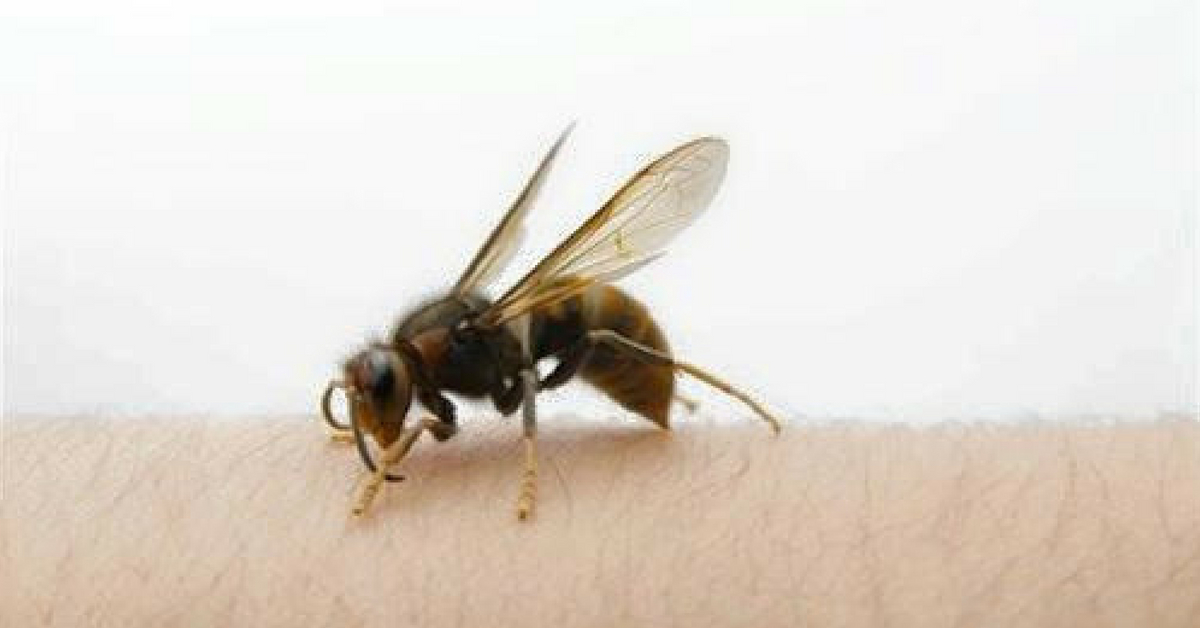
Dog and cat bites are usually small, punctured wounds and should be treated by covering with a clean, dry dressing. If the animal is rabid, please get medical emergency help immediately.
1. Wash the wound with water to remove bacteria-filled saliva of the animal.
2. Keep the bitten part low.
3. Bathe the wound with a weak solution of permanganate of potash, if available.
4. Apply a clean dressing after taking care that the wound has been cauterised.
Insect stings seldom cause grave consequences. However, they can cause severe pain, especially if it is on the lips or the mouth.
1. If it is a bee, wasp or hornet sting, remove the sting with a pair of tweezers. If tweezers aren’t available, apply pressure around the sting to force it out.
2. Wash thoroughly with soap and water, and apply an antihistamine ointment or lotion to relieve itching.
3. Avoid scratching the bites.
Read more here.
8. Choking:-
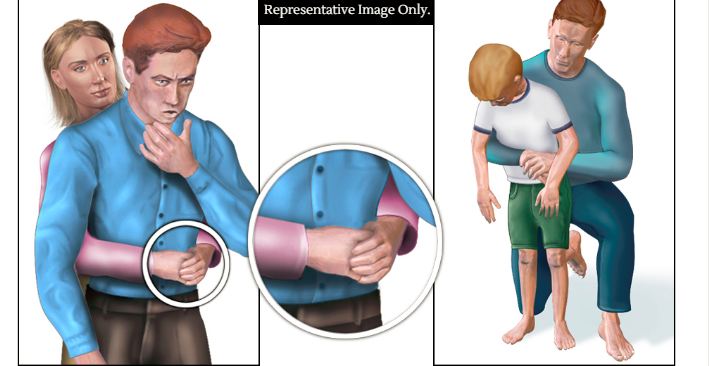
This is when an obstruction blocks the windpipe, causing a person to be severely short of breath. Dislodge the respiratory tract obstruction by bending the patient’s head and shoulders forward, or in the case of a small child, hold them upside down and thump the back hard, between the shoulder-blades. Try inducing vomiting to help the person regurgitate the item causing the blockage.
9. Seizures:-
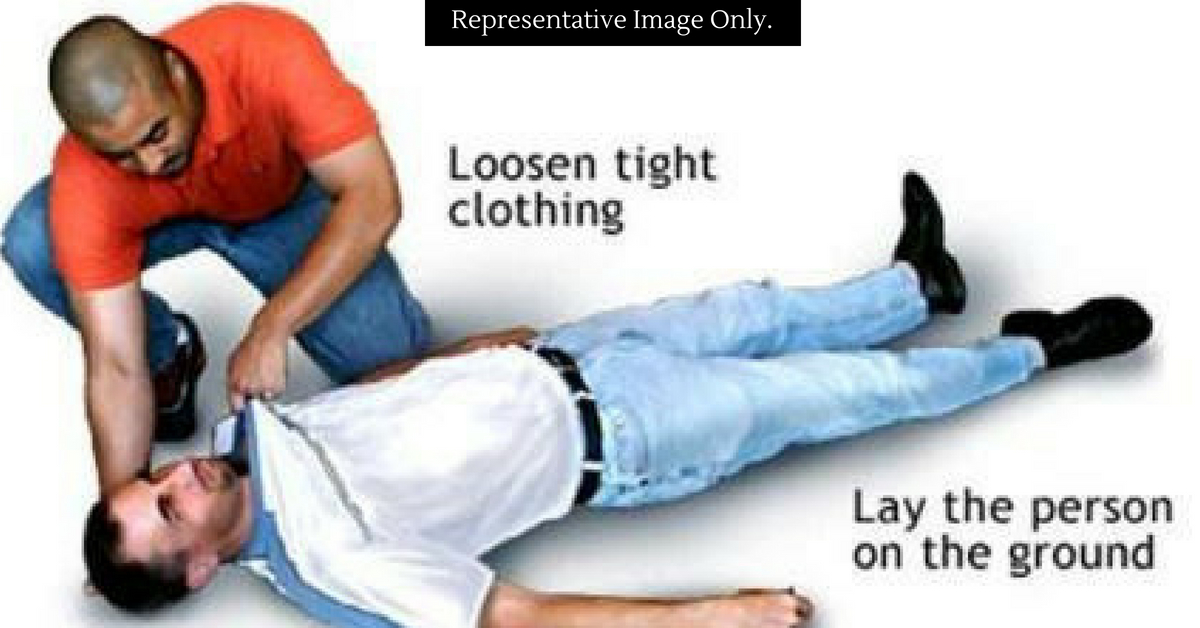
A seizure may be caused by epilepsy. The symptoms include unconsciousness, muscle contractions and convulsions, clouded awareness, weakness, loss of sensation, strange feelings in the stomach, fidgeting, confusion and sleepiness after the seizure.
First aid for seizures aims at keeping the person safe until it stops on its own. Loosen any clothing around the person’s neck, do not restrain them or put anything into their mouth, clear the area around them and stay with them till the seizure stops.
Read more here.
10. Eye-Trauma:-
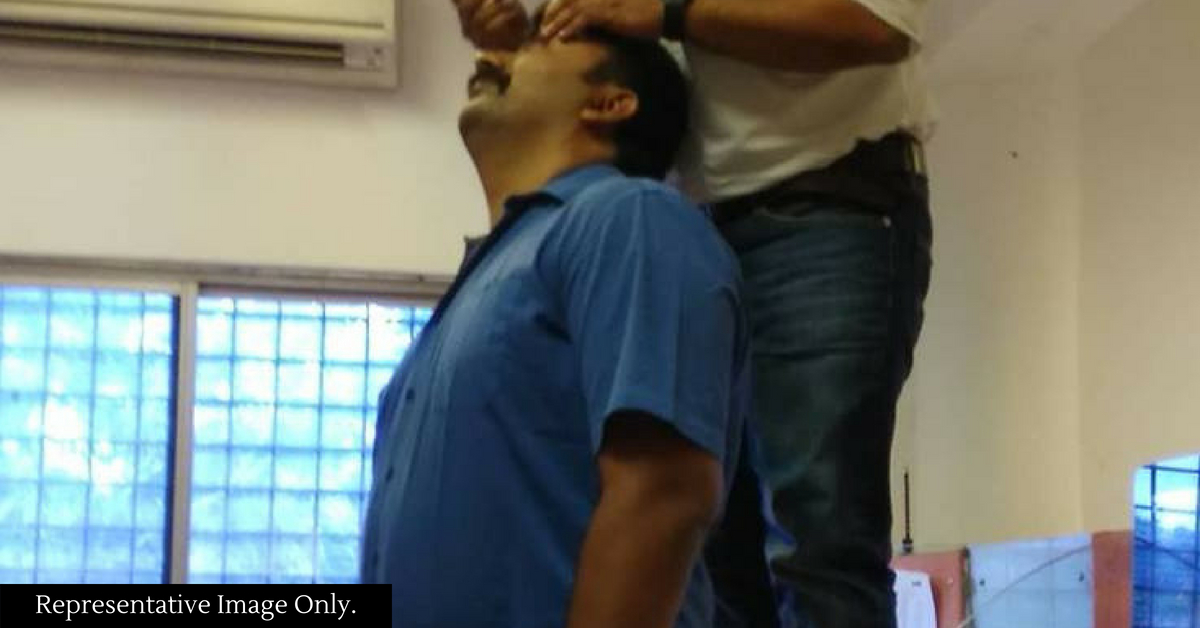
Foreign bodies may enter the eye, causing the eyelids and the eyeball much discomfort. The foreign body may become embedded in the eyeball, causing serious trouble.
Treatment:-
1. Prevent the patient from rubbing the eye, and set them facing the light, standing in front of them.
2. Pull down the lower eyelid, and if the foreign body is seen and isn’t embedded, remove it with the corner of a clean handkerchief, preferably white, twirled up and moistened with water.
If the body is embedded, do not attempt to remove it, but instruct the patient to close their eyes. Apply a soft pad of cotton wool and secure it with a bandage.
If the foreign body is not found and is suspected to be under the upper eyelid, instruct the patient to blink under water. Alternatively, lift the upper lid forward, push the lower lid beneath it and let go of both eyelids. The lashes of the lower lid may brush the inner surface of the upper one, and dislodge the foreign body.
You may also like:- Chennai Students Develop Drone That Deliver First Aid to Accident Spots In No Time!
If some liquid irritant goes into the eye, instruct the patient to blink the eyes under water or flush the eyes with copious amounts of water. Apply a soft cotton pad over the eye, and keep it in position with a shade or bandage applied lightly.
It’s important to repeat that one should remain calm during injuries and emergencies. It will help you provide better first aid until professional help arrives.
(Edited by Shruti Singhal)
Featured Image Credit: HCS
Like this story? Or have something to share? Write to us: [email protected], or connect with us on Facebook and Twitter.
If you found our stories insightful, informative, or even just enjoyable, we invite you to consider making a voluntary payment to support the work we do at The Better India. Your contribution helps us continue producing quality content that educates, inspires, and drives positive change.
Choose one of the payment options below for your contribution-
By paying for the stories you value, you directly contribute to sustaining our efforts focused on making a difference in the world. Together, let’s ensure that impactful stories continue to be told and shared, enriching lives and communities alike.
Thank you for your support. Here are some frequently asked questions you might find helpful to know why you are contributing?


This story made me
-
97
-
121
-
89
-
167











